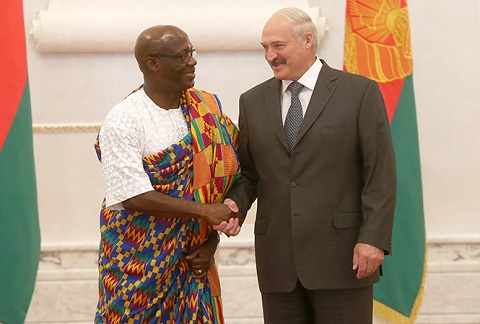By: Hal Gregersen
When Was the Last Time You Asked, “Why Are We Doing It This Way?”
During a time when many retailers are struggling, is booming at Target. But it wasn’t too long ago that the discount retailer’s future didn’t glow so bright. When CEO Brian Cornell took the reins two years ago, he inherited a company that had been struggling for years, taking far too few risks, and sticking too close to the core.
Since then the world has fallen in love with a far edgier Target, which has expanded its offerings through collaborations with such power brands as Lilly Pulitzer, Toms, Neiman Marcus, and SoulCycle, and updated product lines that break the status quo, like its latest gender-neutral kids home brand Pillowfort. But Cornell didn’t start right out of the gate making any big changes like these. Instead, he took time to carefully contemplate his approach, listen to his team, and ask questions.
At the MIT Leadership Center, I recently spoke with another leader, Guy Wollaert, chief exploration officer at Loggia Strategy & Design, about similar experiences he encountered at another highly visible brand, Coca-Cola. During his 20-plus year tenure with the global beverage brand, most recently serving as its chief technical and innovation officer, Wollaert made it a point to seek — and surround himself with — new ideas and people who challenged him to reflect and question first, then act later.
When stakes are high, it can be difficult for leaders, especially senior ones new to their roles, to pause before acting. Here’s advice for how to give yourself time to reflect and lead with questions, based on insights from Wollaert’s and Cornell’s leadership journeys:
Create a questioning ecosystem through diverse teams
Successful leadership isn’t just about the leader, it’s about the team. For initiatives to take hold, leaders must purposefully create diverse teams internally while seeking unique perspectives externally, whether from business partners or customers.
When Wollaert was asked to create a new function called the Global Juice Center, he literally followed the oranges from the groves to the consumer, speaking with stakeholders along the way, to understand every step of the juice-making process and to identify where there was opportunity for change. Unlike Coca-Cola’s traditional products that have a formulaic recipe, its juice products are reliant on Mother Nature for ingredients, which can vary sharply in quality from year-to-year. Through Wollaert’s hands-on experience in the field, he learned that to win in the unpredictable beverage business, extreme flexibility throughout the operations and within the team was essential.
A self-described “strong believer in diversity of thinking and diversity of personalities,” Wollaert made it his quest to bring varied perspectives to his team. His frequent field observations combined with the creation of a diversified team not only improved the Global Juice Center’s procurement process, but helped it do so in a more sustainable manner.
Similarly, after being named CEO, Cornell reorganized the inner leadership circle at Target, promoting talent who had been with the company for years while also recruiting outside talent who brought with them deep knowledge and experience from other companies.
At the same time, Cornell visited stores in person. To gain perspective on the business from multiple angles, he spent considerable time talking with customers and team members to hear from them what worked and what didn’t. He found that collecting first-hand information proved far more likely to provoke valuable new questions than pre-existing second hand information scattered around headquarters.
Stay curious
Curiosity shouldn’t end when you find one solution to a problem. Leaders must constantly explore new ideas themselves, seek out new thinking from those around them, and create partnerships. Seeking serendipitous connections across ideas – and people – brings new opportunity.
Exploring this interconnectivity between seemingly unrelated areas plays an important role in Wollaert’s leadership. An architect by training, he is constantly figuring out ways to connect dots between present and future. He says the same design patterns can be found everywhere, emphasizing the need to be eternally curious.
“Why are we doing it that way?” was the guiding question that fueled Wollaert’s curiosity when he first joined the Coca-Cola Company designing new factories. “I found those questions were not always as basic as I thought. If you want to design a good factory you have to know what happens before and you have to know what happens after. You put it into the bigger context.”
When conceptualizing new ideas at Target, Cornell visited Story, a Manhattan concept store that remakes itself every eight weeks, and talked with its founder Rachel Shechtman. Knowing Target needed to regain merchandizing authority, Cornell jumped on the opportunity to create a connection between Target’s merchandise and products from new brands. It was through his meeting with Shechtman that a new concept for Target — its “Home for the Holidays” collection — was born.
Challenge the status quo, and when needed, start from scratch
Sometimes asking uncomfortable questions means making tough decisions about an existing strategy or abandoning it all together. Wollaert values the power of experimentation, even if it means starting over.
“I found across my career in this business that people tend to be very, very good at continuously improving things — and it’s important, don’t get me wrong,” explained Wollaert. “But I’ve also experienced that people are much less comfortable just imagining you can start from scratch. A blank sheet of paper can indeed be very daunting.”
While it’s both empowering and daunting, starting from scratch opens up an incredible amount of questions, allowing leaders to step back and look at the big picture. Cornell may be CEO of the second largest discount retailer in the U. S., but he hasn’t lost the spirit that keeps entrepreneurs seeking change rather than waiting to adapt to change. Instead of sticking with the status quo, Cornell took the right, measured risks. More recently, he’s been experimenting with new flexible-format stores, scrapping the big-box feel to offer customers convenience with stores that are completely customized to the surrounding neighborhood’s needs. Once opened, he and his team plan to listen, learn, and iterate.
Leaders like Cornell and Wollaert question everything, surround themselves with diverse teams and capitalize on opportunities to hear and experiment with new ideas. They give themselves time to surface divergent thoughts and catalytic questions that ultimately lead to smarter business decisions.
Source: Harvard Business Review



